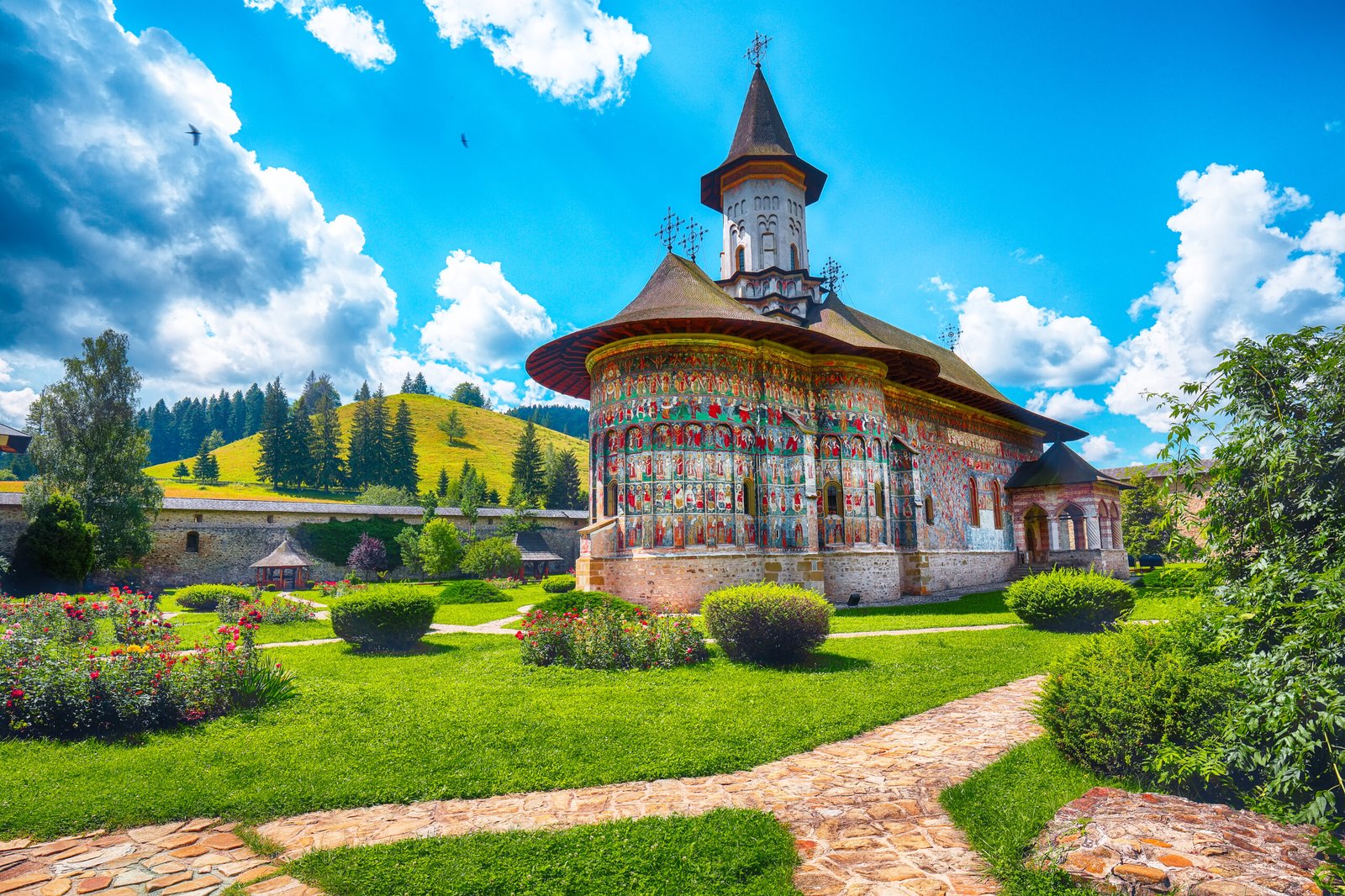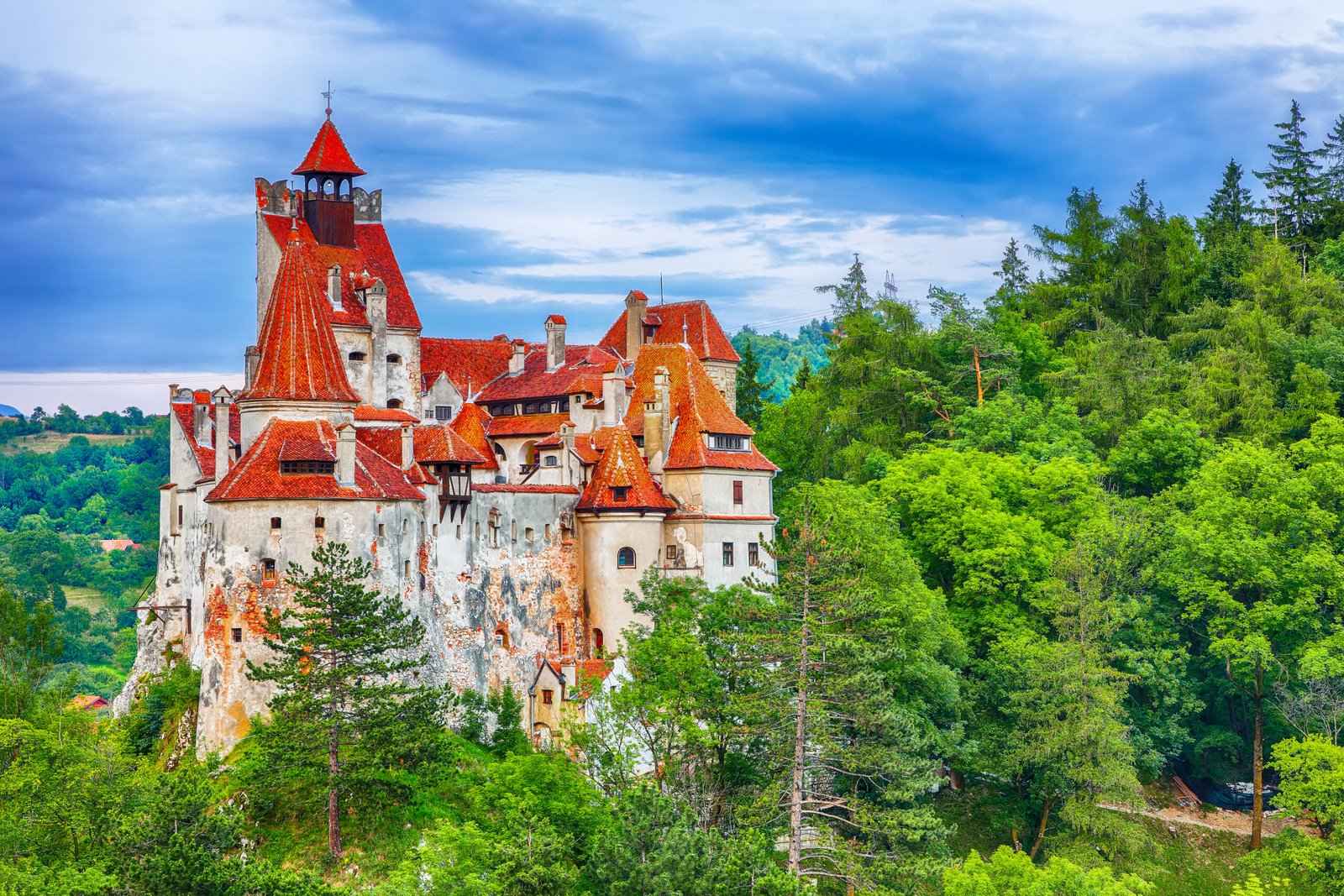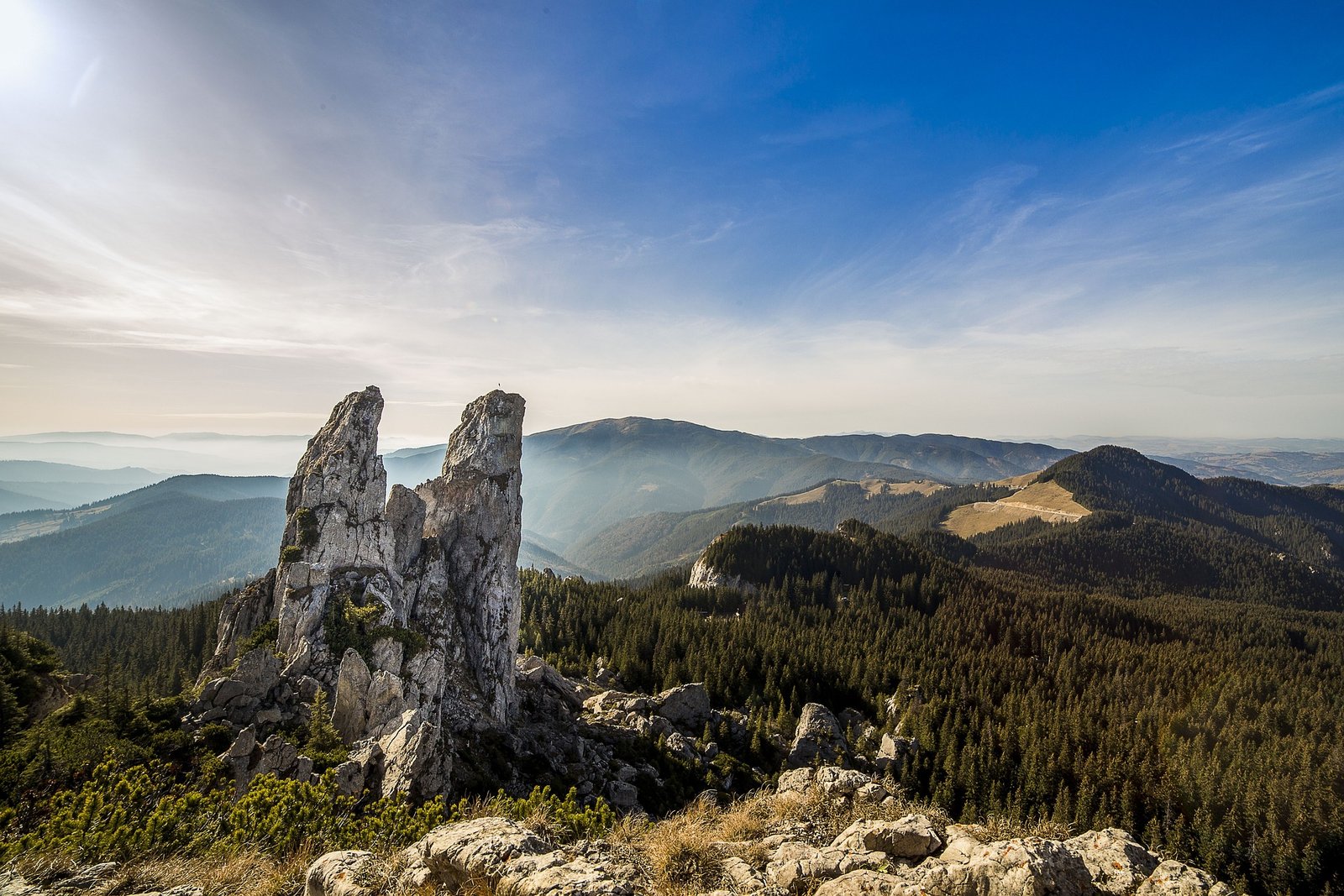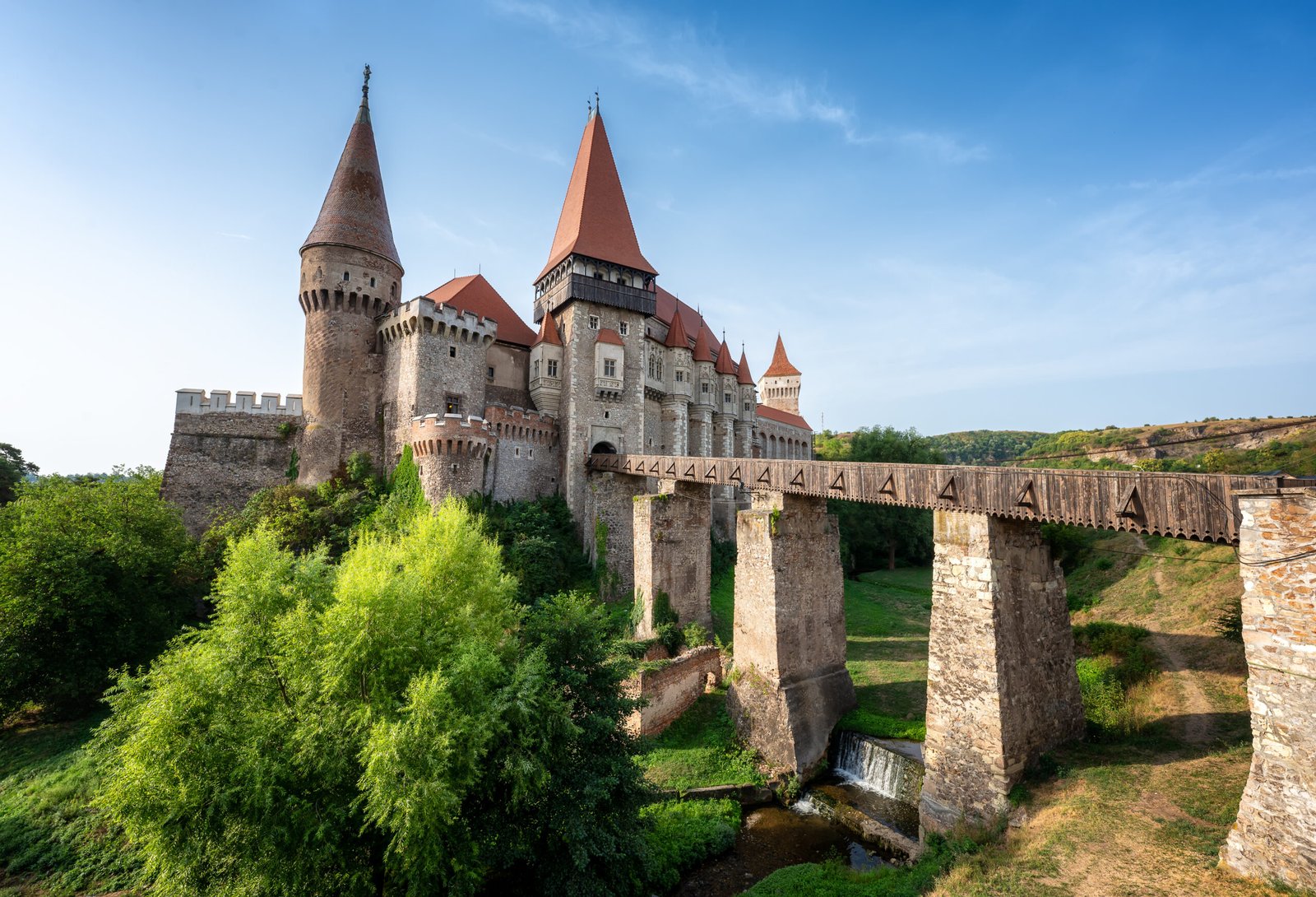
Sucevita Monastery, Romania
Teaching English in Romania offers a unique opportunity to make a meaningful impact while immersing yourself in a rich cultural tapestry. As Romania continues to integrate into the global community, the demand for English language skills is growing, particularly among students eager to broaden their horizons. By teaching English in Romania, you’ll not only help shape the future of ambitious learners but also experience the country’s fascinating blend of history, tradition, and modernity. Whether you’re drawn to its medieval castles, vibrant cities, or warm, welcoming communities, Romania promises an unforgettable adventure and a chance to truly make a difference.
The capital and largest city of Romania, known for its vibrant nightlife, historical architecture, and cultural landmarks like the Palace of the Parliament. Often called “Little Paris” due to its elegant architecture and wide boulevards, Bucharest blends old-world charm with modern energy.
Located in the heart of Transylvania, Cluj-Napoca is a major cultural and educational hub, famous for its lively arts scene, universities, and historical sites. Known for its youthful energy, thanks to a large student population, Cluj is a city of contrasts, where historical landmarks like St. Michael’s Church and the Banffy Palace coexist with cutting-edge art galleries and contemporary festivals.
Timișoara, located in the western part of Romania, is known for its historical significance and architectural beauty. Often called “Little Vienna” because of its Austro-Hungarian influences, the city features elegant squares, baroque buildings, and tree-lined streets.

The medieval Castle of Bran known for the myth of Dracula. Brasov Transylvania, Romania
Romania offers a wealth of experiences for visitors, from historical landmarks to natural wonders. Here are ten popular things to see and do in the country:
Located in Transylvania, Bran Castle is famously associated with the Dracula legend. Though the connection to Vlad the Impaler is tenuous, the castle’s dramatic setting and Gothic architecture make it a must-see.
The Painted Monasteries in Northern Romania, particularly those in the Bucovina region, are UNESCO World Heritage Sites known for their stunning exterior frescoes depicting biblical scenes. Voroneț Monastery, with its vivid blue colour, is especially famous.
Sibiu is a beautifully preserved medieval city in Transylvania, known for its charming old town, colourful buildings, and the iconic Council Tower. It was also a European Capital of Culture in 2007.
Often described as one of the most beautiful roads in the world, the Transfăgărășan Highway winds through the Carpathian Mountains, offering breathtaking views, especially at the high-altitude Balea Lake.
Located in the Maramureș region, the Merry Cemetery is famous for its brightly coloured tombstones and humorous epitaphs that celebrate the lives of the deceased with a touch of humour and local folklore.
This colossal building is the world’s second-largest administrative building (after the Pentagon) and a symbol of Romania’s communist era. Guided tours reveal its lavish interiors and the sheer scale of the structure.
 7. Hike in the Carpathian Mountains
7. Hike in the Carpathian MountainsRomania’s Carpathian Mountains offer excellent hiking opportunities, with trails that lead through dense forests, past glacial lakes, and up to panoramic mountain peaks. The Bucegi Mountains and Piatra Craiului are popular destinations.
The Romanian Riviera, particularly around the resort town of Mamaia, is a popular summer destination with sandy beaches, clear waters, and vibrant nightlife.
A UNESCO World Heritage Site, the Danube Delta is one of Europe’s most biodiverse regions, teeming with wildlife, including hundreds of bird species. Boat tours offer a close-up view of its wetlands and waterways.
The Maramureș region is known for its well-preserved rural traditions, wooden churches (many of which are UNESCO-listed), and folk culture. Visitors can experience traditional crafts, food, and customs in this picturesque part of the country.

Sarmale – Image by Central Transylvania
Romania has a rich culinary heritage, with many dishes unique to the country that reflect its diverse cultural influences. Here are five foods that are uniquely Romanian:
Sarmale are a traditional Romanian dish of cabbage rolls stuffed with a mixture of minced pork (sometimes combined with beef), rice, and spices. They are typically simmered slowly in a sauce made with tomatoes, onions, and smoked bacon, giving them a rich and savoury flavour.
Mămăligă is a staple of Romanian cuisine, similar to polenta. It’s a simple dish made from cornmeal, boiled until it reaches a thick, creamy consistency. Mămăligă can be served as a side dish with stews, meats, or cheese, or eaten on its own with a bit of butter or sour cream.
Ciorbă de burtă is a distinctive Romanian tripe soup, known for its tangy and creamy flavour. The soup is made with beef tripe, garlic, vinegar, and sour cream, and is typically seasoned with dill and served with hot chili peppers on the side.
Mici, also known as mititei, are a type of Romanian grilled sausage made from a mixture of ground meats, typically beef, pork, and lamb, seasoned with garlic, thyme, and other spices. These sausages are shaped into small, cylindrical forms and grilled to perfection, resulting in a juicy, flavourful treat.
Papanasi is a beloved Romanian dessert made from a dough of soft cheese (such as cottage cheese or ricotta), eggs, flour, and semolina, shaped into small doughnuts. The doughnuts are deep-fried until golden and then topped with sour cream and fruit preserves, usually blueberry or cherry.

Image by Adina Voicu
Romanian people and culture are shaped by a rich history, diverse influences, and deep-rooted traditions. Here are ten things to know about them:
Romanians are known for their warm and welcoming nature. Guests are often treated with great respect and generosity, with hosts going out of their way to make visitors feel comfortable and well-fed. Offering food and drink is a common way of showing hospitality.
Family is central to Romanian life. Many people maintain close relationships with extended family members, and family gatherings are common, especially during holidays and important life events. Respect for elders is an important cultural value.
Romania has a vibrant folklore tradition, with stories, songs, and dances passed down through generations. Traditional costumes, intricate embroidery, and folk music are still celebrated, particularly in rural areas and during festivals.
 Respect for Nature
Respect for NatureRomanians have a deep respect for nature, which is reflected in their love for outdoor activities like hiking, fishing, and skiing. The country’s diverse landscapes, including the Carpathian Mountains and the Danube Delta, are cherished and often visited for recreation.
Romanians enjoy celebrating through festivals, both traditional and modern. Events like the Transylvania International Film Festival in Cluj-Napoca, the Sighișoara Medieval Festival, and local village festivals are opportunities for communities to come together and celebrate their heritage.
Romanians are proud of their cultural heritage and history, with a strong sense of national identity. This pride is reflected in the preservation of historical sites, traditional crafts, and the promotion of Romanian literature, art, and music.
Romania is home to a variety of ethnic groups, including Hungarians, Roma, Germans, and others, which contribute to the country’s cultural diversity. This diversity is reflected in Romania’s cuisine, language, and traditions.
Romania has a strong literary and artistic tradition, with figures like the poet Mihai Eminescu, playwright Ion Luca Caragiale, and sculptor Constantin Brâncuși being highly revered. Romanian art, literature, and cinema continue to be influential both domestically and internationally.

Corvins’ Castle
All that is required to teach English in Romania is a TESOL Certification, such as TESOL Australia’s exclusive International TESOL Certificate.
Teaching English in Romania is a rewarding opportunity to immerse yourself in a culturally rich and diverse country while making a meaningful impact on students eager to learn. Romania offers a unique blend of historical charm and modern vibrancy, with warm, hospitable people who are proud of their traditions and heritage. By teaching English, you’ll help bridge cultural gaps, empower learners with valuable language skills, and experience firsthand the beauty of Romania’s landscapes, from the Carpathian Mountains to the Black Sea coast.